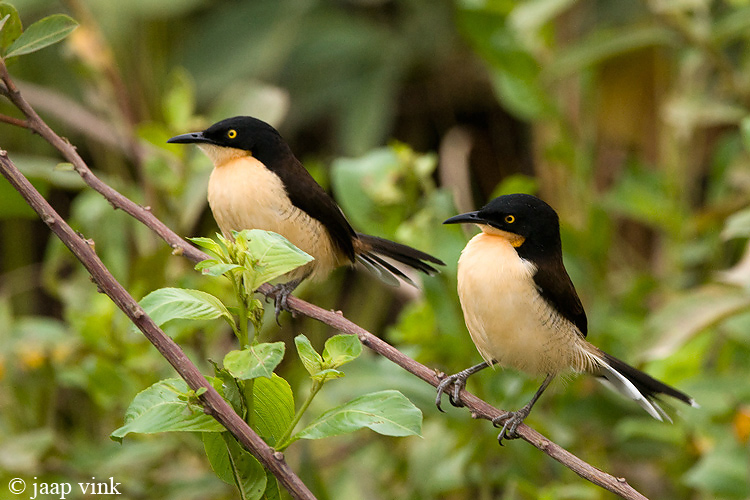
Donacobius atricapillus
TAXONOMY
Turdus atricapilla Linnaeus, 1766, location in error, actually
eastern Brazil.
OTHER COMMON NAMES
English: Black-capped mockingthrush; French: Troglodyte а
miroirs; German: Rohrspottdrossel; Spanish: Paraulata de
Agua, Donacobio.
PHYSICAL CHARACTERISTICS
8.5–9 in (21–22 cm); 1.1–1.5 oz (31–42 g). Unique and unmistakable.
Crown, nape, and shoulders are glossy black; back is
browner; rump is olive-brown. Tail feathers are black with
conspicuous white tips. Wings are blackish with conspicuous
white flash at the base of primaries. Underparts warm yellow
buff with black bars on flanks. Eyes are bright yellow; legs are
dusky green. Has a distendable yellow cheek pouch.
DISTRIBUTION
Panama (Dariйn) through lowland South America east of the
Andes to coastal Brazil and northern Argentina
HABITAT
Brushy vegetation over slow-moving rivers and ponds; occurs
at sea level to rarely 2,000 ft (750 m), usually lower.
BEHAVIOR
Demonstrative and noisy. Pairs indulge in loud ritualized displays,
advertising the white wing-flashes and tail edgings by
spreading the wings and tail. Song is a series of loud whistles.
Both sexes sing in antiphonal style. Female song has a lower,
grating quality not found in the male’s contribution. Other
members of a nesting group may also join in. The bird is territorial,
with the territories often being linear along a marsh
edge.
FEEDING ECOLOGY AND DIET
Not known.
REPRODUCTIVE BIOLOGY
A cooperative breeder; a nesting pair may have up to two additional
helpers, which are usually young from the previous year
or two. Pairs with no assistants rear only one young bird, while
helpers can increase the number to two young. Nest is an open
cup, usually built over or near water. Eggs usually number two
in Venezuela, in Brazil frequently three. They are purplish
white, covered with reddish or purplish spots and blotches. Incubation
is by the female alone for 16–18 days; young are fed
by both parents and by helpers, fledging at 17–18 days. Singlebrooded.
Adults keep young in nest cool by soaking their body
feathers in water and wetting the nestlings.
CONSERVATION STATUS
Not threatened. Common or abundant over much of its range.
Although marsh-drainage may destroy habitat, the species will
colonize suitable vegetation arising around artificial water impoundments.
SIGNIFICANCE TO HUMANS
For two hundred years has provided much diversion and entertainment
for taxonomic ornithologists, a process that will
doubtless continue.
Other popular Animals
Photo Gallery of - Black-capped donacobius
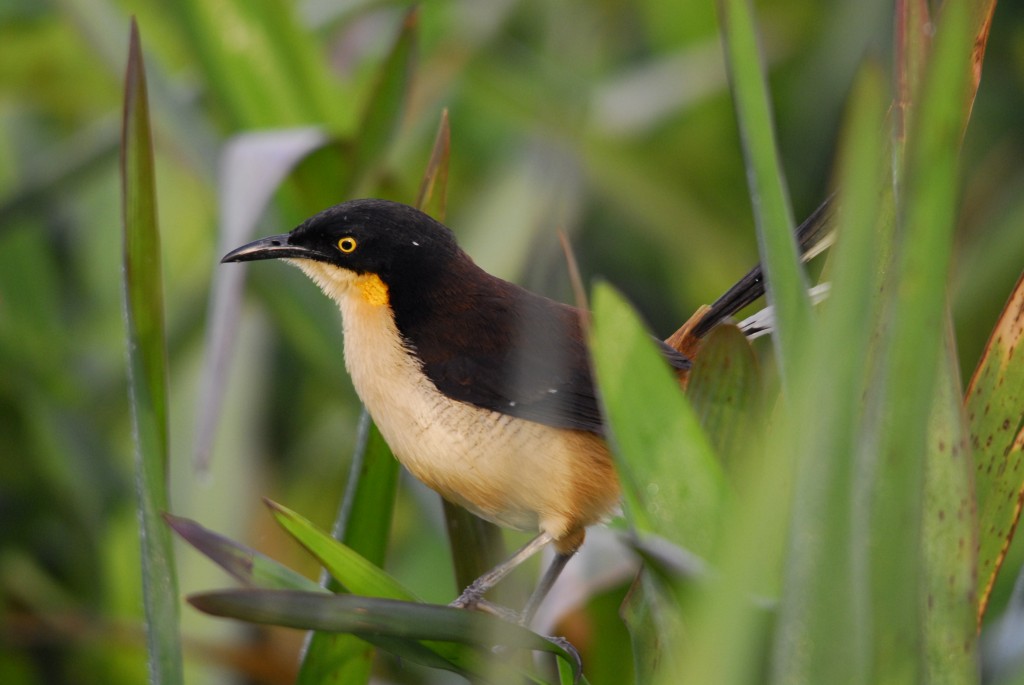
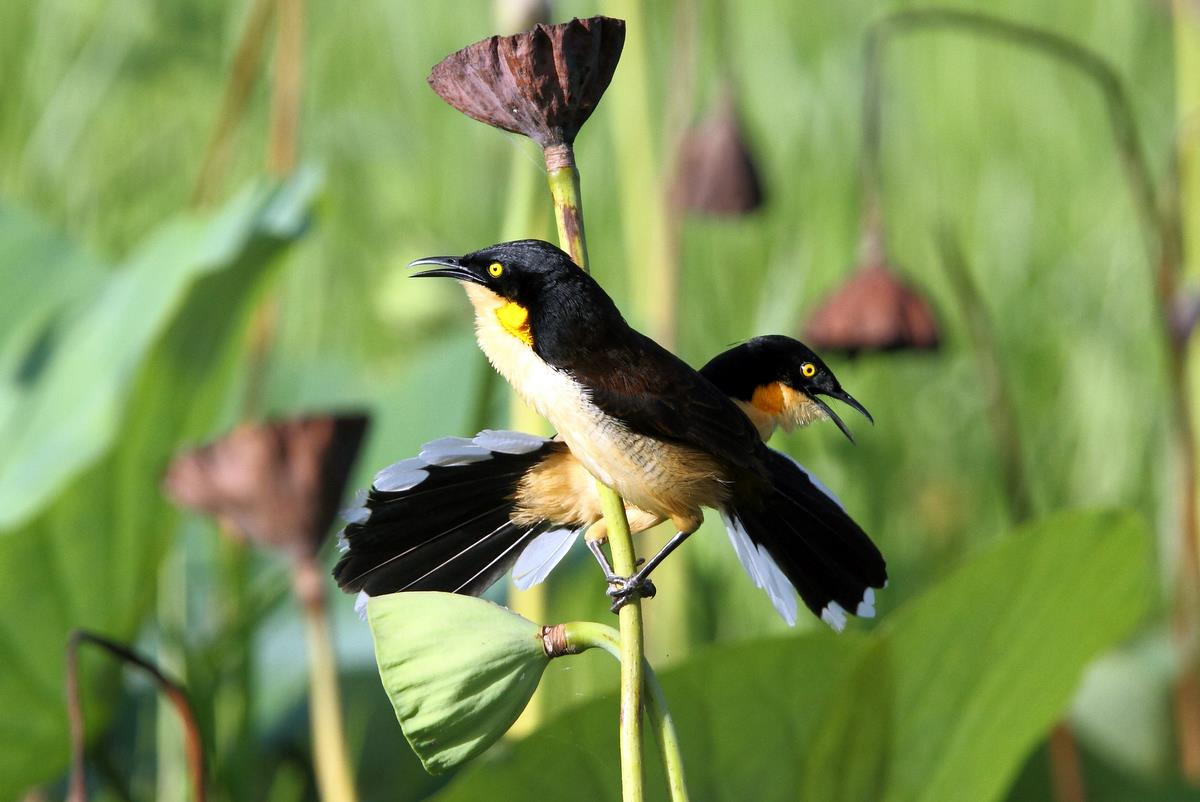
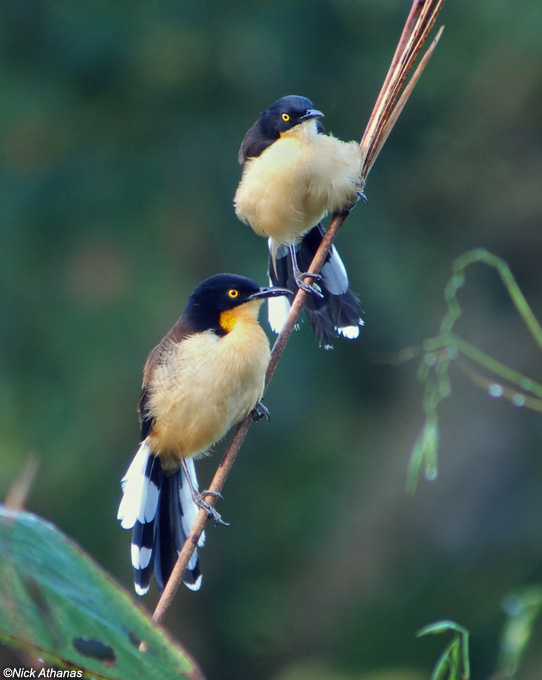
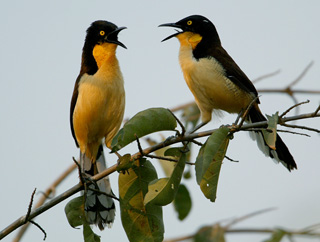
 Animalia Life
Animalia Life